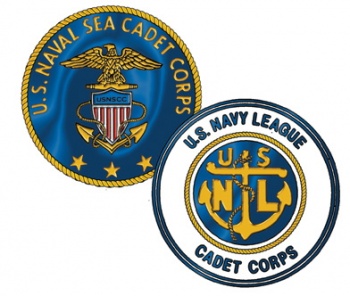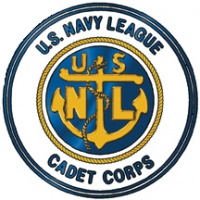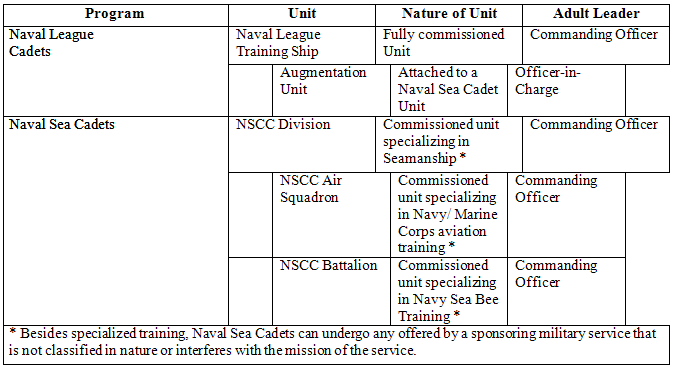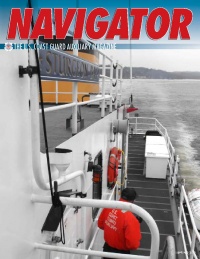Difference between revisions of "U.S. Naval Sea Cadet Corps"
Brucejohnson (Talk | contribs) (→Available Resources) |
Brucejohnson (Talk | contribs) (→Sea Cadets & Auxiliary work together) |
||
| (30 intermediate revisions by 2 users not shown) | |||
| Line 1: | Line 1: | ||
{| cellpadding="30" cellspacing="0" | {| cellpadding="30" cellspacing="0" | ||
| − | | <div align="left">[[Image:nscc2.jpg| | + | | <div align="left">[[Image:nscc2.jpg|350px|U.S. Naval Sea Cadet Corps]]</div> || <div align="left">On November 12, 2009, the [http://www.cgaux.org/ U.S. Coast Guard Auxiliary] signed a Memorandum of Understanding (MOU) to partner with the '''[http://www.seacadets.org/ United States Naval Sea Cadet Corps]'''. The Auxiliary’s [http://wow.uscgaux.info/content.php?unit=h-dept Human Resources Directorate] is coordinating the implementation of “enhanced maritime training opportunities” for the two organizations.</div> || <div align="right">__TOC__</div> || |
|} | |} | ||
==Available Resources== | ==Available Resources== | ||
| − | |||
| − | |||
| − | |||
| − | |||
| − | |||
| − | |||
<div align="center"> | <div align="center"> | ||
{| cellpadding="20" cellspacing="0" | {| cellpadding="20" cellspacing="0" | ||
| − | | [[Image: | + | | [[Image:nlcc.jpg|thumb|left|200px|[https://www.seacadets.org/nlcc League Cadets] <br />Youths -- 10-12 years]] || [[Image:nscc.jpg|thumb|right|180px|[https://www.seacadets.org/ Naval Sea Cadets] <br />Youths -- 13-17 years]] |
|} | |} | ||
</div> | </div> | ||
| Line 33: | Line 27: | ||
==The Language of the Naval Sea Cadet Corps== | ==The Language of the Naval Sea Cadet Corps== | ||
| − | + | NSCC/NLCC units are called … | |
[[Image:nscc units.gif|center|NSCC/NLCC organization]] | [[Image:nscc units.gif|center|NSCC/NLCC organization]] | ||
| Line 39: | Line 33: | ||
| − | [[Image:nscc map.gif|thumb| | + | [[Image:nscc map.gif|thumb|400px|NSCC/NLCC Regional Areas]] |
NSCC/NLCC units are found in fourteen Regional Areas with NSCC or NLCC Regional Directors supervising the training, administration, and operations of their assigned NSCC/NLCC units in coordination with the NSCC national headquarters and sponsoring Navy League of the United States Councils. | NSCC/NLCC units are found in fourteen Regional Areas with NSCC or NLCC Regional Directors supervising the training, administration, and operations of their assigned NSCC/NLCC units in coordination with the NSCC national headquarters and sponsoring Navy League of the United States Councils. | ||
==Coast Guard Auxiliary Support of the NSCC/NLCC== | ==Coast Guard Auxiliary Support of the NSCC/NLCC== | ||
| − | Under the [http:// | + | Under the [http://bdept.cgaux.org/pdf/NavalSeaCadetCorps-CGAuxMOUNov2009.pdf CGAUX-NSCC MOU] guidelines, Coast Guard Auxiliary Flotillas may now offer Recreational Boating Safety and Seamanship training and [http://www.cgaux.org/boatinged/ public education] courses to NSCC/NLCC units as well as enhanced maritime training opportunities. It is strongly encouraged that interested flotillas should draw up memorandums of agreement with NSCC/NLCC units that specifically spells out what type, how, and when training will be provided. These MOA’s should first be reviewed and approved by applicable Auxiliary legal officers of the flotillas before final endorsements on the MOA’s are made. |
| + | [[Image:Navigator-2010_Spring.jpg|thumb|left|200px|[http://bdept.cgaux.org/pdf/NavigatorSeaCadets2010.pdf Onboard with the Sea Cadets]]] | ||
Flotillas seeking training support for NSCC/NLCC units by active-duty and reserve Coast Guard assets and facilities should make such requests through their respective Auxiliary Sector Coordinators (ASC) or through their Division Commanders if Coast Guard assets are in remote areas. Those flotillas that wish to sponsor an NSCC or NLCC unit are required to seek formal approval by the Commandant of the Coast Guard through the Coast Guard Auxiliary’s Chain-of-Communications. | Flotillas seeking training support for NSCC/NLCC units by active-duty and reserve Coast Guard assets and facilities should make such requests through their respective Auxiliary Sector Coordinators (ASC) or through their Division Commanders if Coast Guard assets are in remote areas. Those flotillas that wish to sponsor an NSCC or NLCC unit are required to seek formal approval by the Commandant of the Coast Guard through the Coast Guard Auxiliary’s Chain-of-Communications. | ||
| − | == | + | ==Coast Guard Auxiliary Best Practices== |
| − | + | * [http://admissions.uscga.edu/i2E/summer/index.asp Academy Introduction Mission (AIM)] -- Introduce Sea Cadets to the [http://www.cga.edu/ U.S. Coast Guard Academy] | |
| − | [ | + | * [[Providing Shoreside and Underway Training Opportunities to Sea Cadets & Sea Scouts]] |
| + | * [http://admissions.uscga.edu/partners/ U.S. Coast Guard Academy Admissions Partners] | ||
| + | * [http://college.cgauxnet.us/home University Programs] | ||
Latest revision as of 18:02, 22 December 2019
| On November 12, 2009, the U.S. Coast Guard Auxiliary signed a Memorandum of Understanding (MOU) to partner with the United States Naval Sea Cadet Corps. The Auxiliary’s Human Resources Directorate is coordinating the implementation of “enhanced maritime training opportunities” for the two organizations. |
Available Resources
The NSCC was established by the Navy League of the United States in 1958 at the request of the Department of the Navy. The NSCC was well received and grew rapidly in both number of units and in the number of young people enrolled. In 1962, the NSCC was federally chartered by Congress under Public Law 87-655 as a non-profit civilian organization with specific objective and purposes in regards to training of American boys with this training to be accomplished through organization and cooperation with the Navy Department. The law established the NSCC as a legal entity, separate from the Navy League and set forth the corporate powers and other enabling details for the functioning of the NSCC. In 1974, Public Law 87-655 was amended by Public Law 93-504 to permit enrollment of girls in the Corps.
Position Statements
The NSCC offers a nautical oriented training program for young Americans, ages 11 through 17. The training program’s objectives are to encourage and aid American youth to develop an interest and skill in basic seamanship and in its naval applications and to teach Naval Sea Cadets patriotism, courage, self-reliance, and kindred virtues. The NSCC allows young people to sample military life with no obligation to join any branch of the armed forces. Both the Navy and NSCC with support from the United States Coast Guard and other military services provide Naval Sea Cadets with a wide range of civilian and military career opportunities available to them and to help explain youth’s responsible role in society.
Fact Sheets about NSCC/NLCC Programs
NSCC/NLCC units are called …
NSCC/NLCC Organization Structure
NSCC/NLCC units are found in fourteen Regional Areas with NSCC or NLCC Regional Directors supervising the training, administration, and operations of their assigned NSCC/NLCC units in coordination with the NSCC national headquarters and sponsoring Navy League of the United States Councils.
Coast Guard Auxiliary Support of the NSCC/NLCC
Under the CGAUX-NSCC MOU guidelines, Coast Guard Auxiliary Flotillas may now offer Recreational Boating Safety and Seamanship training and public education courses to NSCC/NLCC units as well as enhanced maritime training opportunities. It is strongly encouraged that interested flotillas should draw up memorandums of agreement with NSCC/NLCC units that specifically spells out what type, how, and when training will be provided. These MOA’s should first be reviewed and approved by applicable Auxiliary legal officers of the flotillas before final endorsements on the MOA’s are made.
Flotillas seeking training support for NSCC/NLCC units by active-duty and reserve Coast Guard assets and facilities should make such requests through their respective Auxiliary Sector Coordinators (ASC) or through their Division Commanders if Coast Guard assets are in remote areas. Those flotillas that wish to sponsor an NSCC or NLCC unit are required to seek formal approval by the Commandant of the Coast Guard through the Coast Guard Auxiliary’s Chain-of-Communications.






